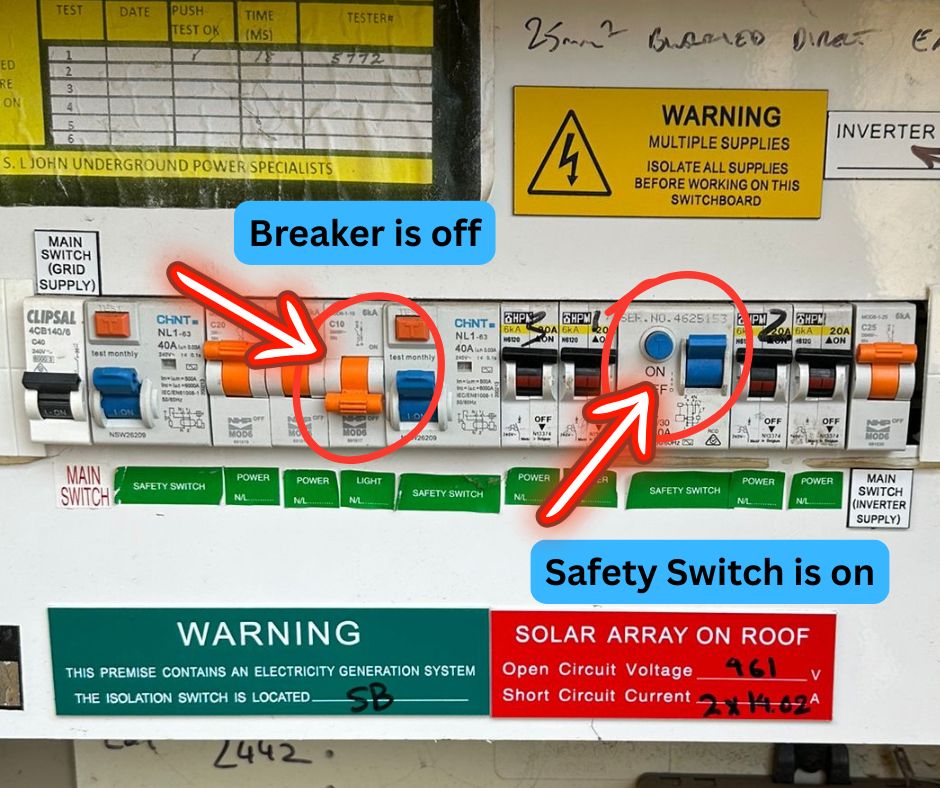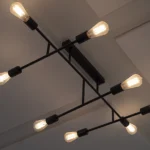Identifying Critical Warning Signs That Your Switchboard Necessitates an Urgent Upgrade
Regularly experiencing issues such as tripped circuit breakers, flickering lights, unsettling burning odours, outdated fuses, and the lack of safety switches are alarming indicators that your switchboard may not only be unsafe but also non-compliant with current Australian Standards (AS/NZS 3000). These troubling signs pose serious risks, including electric shock, damage to appliances, and even the potential for devastating fire hazards. It is imperative to have a certified electrician assess your electrical system without delay to ensure both your safety and compliance with existing regulations.
Understanding the Vital Importance of Switchboards in Your Home's Electrical Framework
The switchboard in your residence plays an indispensable role, functioning as the heart of your electrical system. If it is outdated or displaying signs of malfunction, it could significantly jeopardise your safety and overall well-being. Numerous older homes, particularly those in Melbourne’s outer southeast, still rely on electrical systems that were installed many decades ago, prior to the introduction of modern electrical safety standards. Upgrading your switchboard transcends mere routine maintenance; it is a crucial step to ensure your home meets contemporary regulations and mitigates the risks associated with outdated installations.
In this discourse, we will conduct an in-depth exploration of the principal warning signs that suggest your switchboard may require replacement, underscoring the significance of regulatory compliance and the hazards associated with neglecting these vital indicators.
1. Frequent Circuit Breaker Trips as Indicators of Potential Overload Issues
If you find that your circuit breakers are tripping on a regular basis, particularly when multiple appliances are in use simultaneously, this could strongly suggest that your switchboard is facing overload challenges. Such frequent trips may indicate inadequate wiring, poor load distribution, or aging breakers that can no longer operate safely. The persistent tripping of circuit breakers not only disrupts your daily life but may also lead to more severe electrical complications if left unresolved. For further insights into enhancing the reliability of your electrical system, consider examining our Electrical Panel Upgrade Services.
2. Flickering or Dimming Lights as Indicators of Voltage Fluctuations
When you observe your lights flickering or dimming, especially during the startup of appliances, it often signifies issues linked to voltage instability. This situation is typically caused by loose or deteriorating connections within the switchboard, or a system that struggles to manage load surges effectively. Such electrical fluctuations can lead to further complications, including damage to sensitive electronic devices. It is vital to address this issue promptly to maintain a stable and safe electrical environment throughout your home, ensuring that all devices function optimally.
3. Detecting Burning Smells or Heat Marks as Indicators of Serious Danger
If you notice a burning odour near your switchboard or spot visible signs of charring, discolouration, or melted plastic, these are serious warning signs. These symptoms typically indicate overheating or arcing occurring within the switchboard, which substantially increases the risk of fire. Should you encounter any of these alarming signs, it is crucial to take immediate action to protect your home and loved ones from potential hazards. For authoritative information regarding electrical fire risks, please refer to the Victorian Building Authority.
4. The Presence of Obsolete Ceramic Fuses as Indicators of the Need for Modern Safety Features
Discovering ceramic fuses in your switchboard, particularly those installed prior to the 1990s, suggests that your electrical system may be considerably outdated. Unlike contemporary circuit breakers, ceramic fuses lack rapid-response safety capabilities and do not provide sufficient protection against electric shock. Current wiring standards, specifically AS/NZS 3000:2018, mandate that all final sub-circuits must be fitted with safety switch (RCD) protection. If your switchboard still contains ceramic fuses, it is not only antiquated but also poses potential dangers that must be addressed without delay.
5. Warm or Hot Switchboard Panels as Indicators of Overloaded Circuits
Your switchboard should ideally maintain a temperature that is consistent with room temperature during operation. If you discover that its surface is warm or hot to the touch, this usually indicates poor internal connections or overloaded circuits. Continued exposure to excessive heat can lead to the degradation of insulation or even cause irreversible damage to the internal wiring. It is essential to investigate and remedy this issue to prevent further complications and to ensure the safety of your home’s electrical system.
6. Outdated Switchboards Struggling to Accommodate Modern Appliance Demands
As the usage of high-demand electrical devices in modern households continues to increase—ranging from larger air conditioning systems to induction cooktops, electric vehicles, and comprehensive remote work setups—older switchboards often find themselves incapable of safely managing these loads. Many of these outdated switchboards were not engineered to meet contemporary demands, rendering them vulnerable to dangerous overload situations. Upgrading to a modern switchboard is imperative to ensure that your home’s electrical system can effectively and safely support all your requirements, thus enhancing both safety and efficiency.

7. The Lack of Safety Switches (RCDs) as a Significant Compliance Concern
If your switchboard does not feature safety switches (RCDs), your property fails to comply with essential modern protection standards. RCDs are now compulsory for all new installations and electrical work, as stipulated by AS/NZS 3000. Furthermore, recent amendments to rental property laws enforced by Energy Safe Victoria as of March 29, 2023, mandate that all rental homes in Victoria must be equipped with compliant circuit breakers and RCDs. It is vital to review and adhere to these updated standards to ensure the safety of your property and its residents.
8. Potential Asbestos Exposure in Older Switchboards as a Health Risk
Older switchboards, particularly those installed before 1985, may contain asbestos in their backing panels or internal components. This presents significant health hazards, as exposure to asbestos can lead to severe respiratory complications and other health issues. The legal removal of asbestos can only be performed by licensed asbestos professionals. It is advisable to arrange a comprehensive Home Electrical Inspection with a qualified electrician before proceeding with any alterations or removals of older switchboard housings to ensure safety and compliance.
9. Unusual Noises from Your Switchboard as Indicators of Serious Electrical Issues
If you hear peculiar sounds such as buzzing, popping, or cracking coming from your switchboard, or if you notice breakers exhibiting scorch marks or melted plastic, these are unmistakable indicators of internal arcing or overload. Such problems require immediate attention to prevent the risk of fire or damage to your appliances. Taking prompt action is crucial to maintain the safety and functionality of your electrical system, ensuring that it operates smoothly without interruptions.
10. Legal and Insurance Risks Linked to Non-Compliant Switchboards
An outdated or non-compliant switchboard can jeopardise your insurance coverage in the unfortunate event of an electrical fire. Compliance with Australian Standards is mandated by both federal and state authorities. Any property undergoing renovations, appliance upgrades, or tenancy alterations must adhere to the latest safety requirements to avert legal repercussions and ensure the well-being of all occupants within the property.
Why Choose Direct Point Electrical for Your Switchboard Upgrade?
Located in outer east Melbourne, Direct Point Electrical specialises in switchboard upgrades that ensure compliance with current standards while significantly enhancing your home’s overall safety. Our team of expert electricians is dedicated to upgrading legacy homes, guaranteeing adherence to:
- AS/NZS 3000:2018 Wiring Rules
- Energy Safe Victoria requirements
- All local DNSP and safety notice obligations
- Certification through Certificate of Electrical Safety (COES)
Our extensive Switchboard Upgrade Services encompass thorough assessment, safe removal of asbestos, installation of RCDs, and optional surge protection to enhance the safety and efficiency of your home’s electrical system, ensuring peace of mind for you and your family.
Frequently Asked Questions Regarding Switchboard Upgrades
Q: How often should I have my switchboard inspected?
A: It is advisable to have your switchboard inspected every five years or whenever you introduce significant electrical loads into your home to ensure ongoing safety and compliance with regulations.
Q: Can I perform a switchboard upgrade myself?
A: No, switchboard upgrades must be executed by a licensed electrician to guarantee safety and adherence to current regulations, protecting both you and your property.
Q: How long does a switchboard upgrade generally take?
A: Most upgrades can be completed within a single day, minimising disruptions to your household activities while ensuring safety is promptly achieved.
Q: Will an upgraded switchboard increase my home’s market value?
A: Absolutely, an upgraded electrical system is highly attractive to potential buyers and can significantly enhance your property’s value in the competitive real estate market.
The Article: Switchboard Upgrade Warning Signs: Is Your Home Safe? first appeared on https://writebuff.com
The Article Warning Signs of a Switchboard Upgrade: Is Your Home Safe? Was Found On https://limitsofstrategy.com

